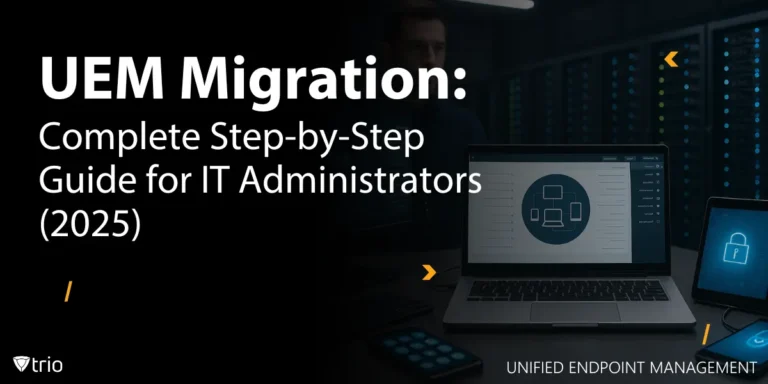Effective management of data is paramount for organizational success. The risks are paramount. In 2022, three-quarters of IT leaders had experienced severe data loss which had been deemed critical. Central to this is the concept of data archiving, a process essential for securely storing inactive yet potentially valuable data for future use or compliance purposes. This guide delves into the intricacies of data archiving strategies, exploring both traditional and modern approaches, and offering insights into best practices for organizations aiming to optimize their data management processes. From understanding the fundamentals of data archiving to implementing robust strategies that encompass policy formulation, automation, security, and resilience, this guide equips organizations with the knowledge needed to navigate the complexities of data management in the digital age.
What Is Data Archiving?
- Data Retention: Archiving prevents data loss in a secure and accessible manner for as long as necessary, whether for compliance reasons, historical reference, or business continuity.
- Cost Optimization: Archiving helps optimize storage costs by moving less frequently accessed or inactive data from expensive primary storage to more cost-effective secondary storage.
- Performance Improvement: By freeing up space on primary storage systems, data archiving can improve the performance and responsiveness of active systems.
- Compliance and Legal Requirements: Many industries have regulations that require organizations to retain certain types of data for specific periods. Archiving helps in ensuring compliance with these regulations and facilitates the retrieval of data during audits or legal proceedings.
- Risk Management: Archiving minimizes the risk of data loss or corruption by providing a backup of historical data that may be needed to recover from disasters, system failures, or inadvertent deletions.
Old Data Archival Strategies and Techniques
- Tape Storage: Tape storage involves storing data on magnetic tape cartridges. Tapes offer high capacity and are well-suited for long-term storage. They are often used for backups and archival purposes, especially in environments with large volumes of data.
- Optical Discs: Optical discs, such as CDs, DVDs, and Blu-ray discs, were once popular for archiving data. While they offer relatively low cost and portability, their capacity is limited compared to other storage media, and they are becoming less common with the rise of cloud storage and high-capacity hard drives.

Data Archiving Strategies Organizations Should Implement
-
Define Data Retention Policies
Establish clear policies for what data needs to be archived, how long it should be retained, and under what circumstances it can be deleted. Consider regulatory requirements, business needs, and data sensitivity when defining these policies.
-
Automate the Archiving Process
Implement automated archiving solutions that can efficiently identify and move data to secondary storage based on predefined criteria. Automation helps ensure consistency, reduces human error and minimizes the need for manual intervention.
-
Use Scalable and Flexible Storage Solutions
Choose storage solutions that can scale to accommodate growing data volumes and adapt to changing business requirements. Cloud storage, object storage, and scalable file systems are examples of scalable and flexible storage solutions.
-
Encrypt Archived Data
Encrypt archived data to protect it from unauthorized access and ensure compliance with data privacy regulations. Use strong encryption algorithms and key management practices to safeguard sensitive information.
-
Regularly Test Data Recovery Processes
Periodically test data recovery processes to ensure that archived data can be reliably restored when needed. Conduct simulated recovery drills and verify the integrity of archived data to identify and address any issues proactively.
-
Monitor and Manage Storage Resources
Monitor storage usage and performance to proactively identify capacity constraints, performance bottlenecks, or potential issues with archived data. Implement storage management tools and practices to optimize resource utilization and maintain service levels.
-
Document Archiving Procedures
Document archiving procedures, including data classification criteria, retention policies, archival schedules, and recovery processes. Ensure that relevant stakeholders are familiar with these procedures and can follow them consistently.
Conclusion
In conclusion, data archiving stands as a cornerstone in the modern landscape of data management, offering organizations the means to securely store and manage their invaluable data assets. From the evolution of archival strategies to the adoption of innovative digital solutions, this guide has underscored the significance of implementing effective archiving practices. By adhering to the best practices above as a sort of data archiving template, organizations can not only optimize storage resources but also enhance compliance, mitigate risks, and bolster resilience. As organizations continue to navigate the ever-expanding realm of data, mastering the art of data archiving remains essential for maximizing the value and longevity of their data assets.
If you are interested in streamlining your data management and ensuring the integrity of critical information, use our Mobile Device Management (MDM) solution, Trio. Trio can help your organization’s employee data archiving strategies by managing employee profiles on their devices, while also allowing you to remotely wipe data when needed such as onboarding and offboarding an employee. Try out Trio’s free demo to see what Trio is capable of for your organization.
Get Ahead of the Curve
Every organization today needs a solution to automate time-consuming tasks and strengthen security.
Without the right tools, manual processes drain resources and leave gaps in protection. Trio MDM is designed to solve this problem, automating key tasks, boosting security, and ensuring compliance with ease.
Don't let inefficiencies hold you back. Learn how Trio MDM can revolutionize your IT operations or request a free trial today!





